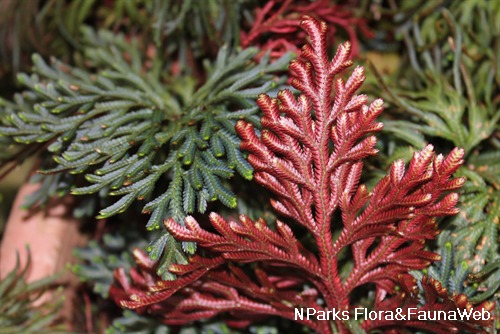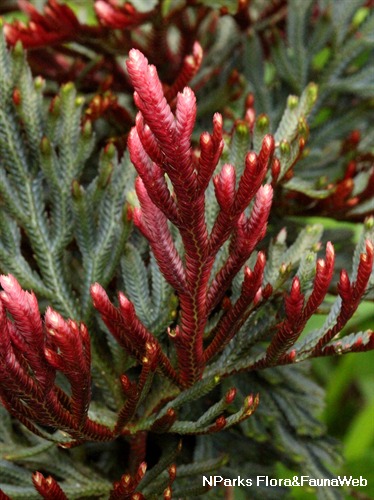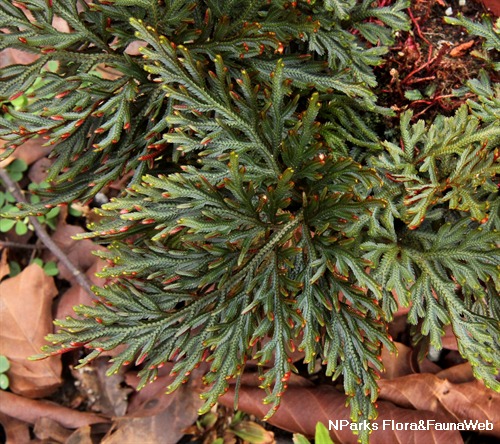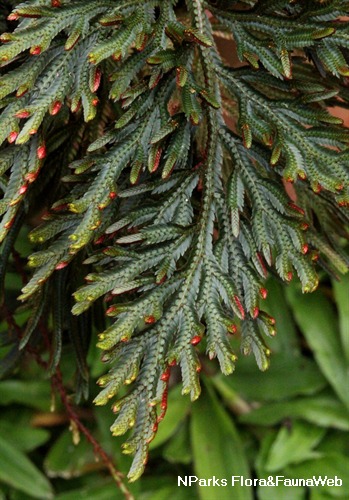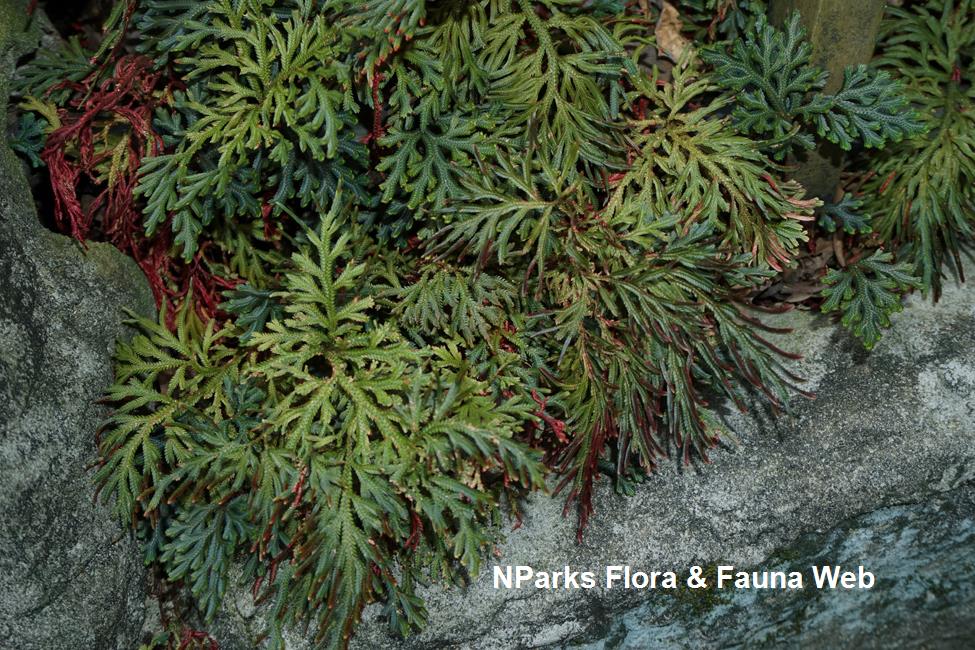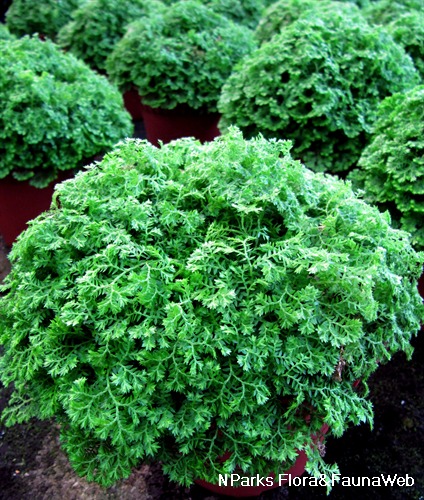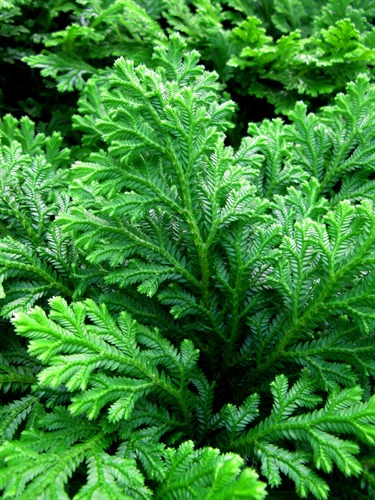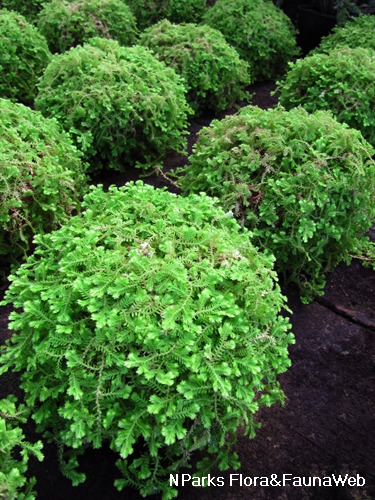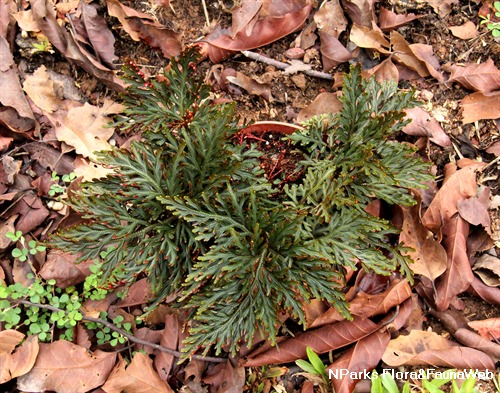
Name
Classifications and Characteristics
| Plant Division | Ferns & Lycophytes (Non-Seed Vascular Plants) (Clubmoss & Spikemoss) |
|---|---|
| Plant Growth Form | Herbaceous Plant |
| Lifespan (in Singapore) | Perennial |
| Mode of Nutrition | Autotrophic |
Biogeography
| Native Distribution | Central America and tropical South America |
|---|---|
| Native Habitat | Terrestrial |
| Preferred Climate Zone | Tropical, Sub-Tropical / Monsoonal |
| Local Conservation Status | Non-native (Horticultural / Cultivated Only) |
Description and Ethnobotany
| Growth Form | Growth form is described as a rhizophore, which is a distinct feature of Selaginella species, erect plant measuring about 10 - 25 cm long and 10 - 15 cm wide. |
|---|---|
| Roots | Rhizome systems |
| Foliage | Dark green above, dark red under, mostly bi-pinnate. |
| Stems | Reddish stems which are described as rhizophores, a prop-like structure starting at the point of branching and forks out dichotomously. |
| Habitat | Moist areas like riverbank, thickets in dense forests and in lowland rainforests. |
| Etymology | Genus epithet Selaginella is derived from the Latin word selago, which means clubmoss. Species epithet erythropus is derived from the Greek word eruthros, which means red. |
Landscaping Features
| Desirable Plant Features | Ornamental Foliage |
|---|---|
| Landscape Uses | Parks & Gardens, Small Gardens |
| Usage Hazard - Cons | Invasive / Potentially Invasive |
Fauna, Pollination and Dispersal
| Seed or Spore Dispersal | Abiotic |
|---|
Plant Care and Propagation
| Light Preference | Semi-Shade, Full Shade |
|---|---|
| Water Preference | Occasional Misting, Lots of Water |
| Plant Growth Rate | Fast |
| Rootzone Tolerance | Moist Soils, Fertile Loamy Soils |
Foliar
| Foliage Retention | Evergreen |
|---|---|
| Mature Foliage Colour(s) | Green, Red |
| Foliar Attachment to Stem | Sessile |
Image Repository
Others
| Master ID | 280 |
|---|---|
| Species ID | 1576 |
| Flora Disclaimer | The information in this website has been compiled from reliable sources, such as reference works on medicinal plants. It is not a substitute for medical advice or treatment and NParks does not purport to provide any medical advice. Readers should always consult his/her physician before using or consuming a plant for medicinal purposes. |

